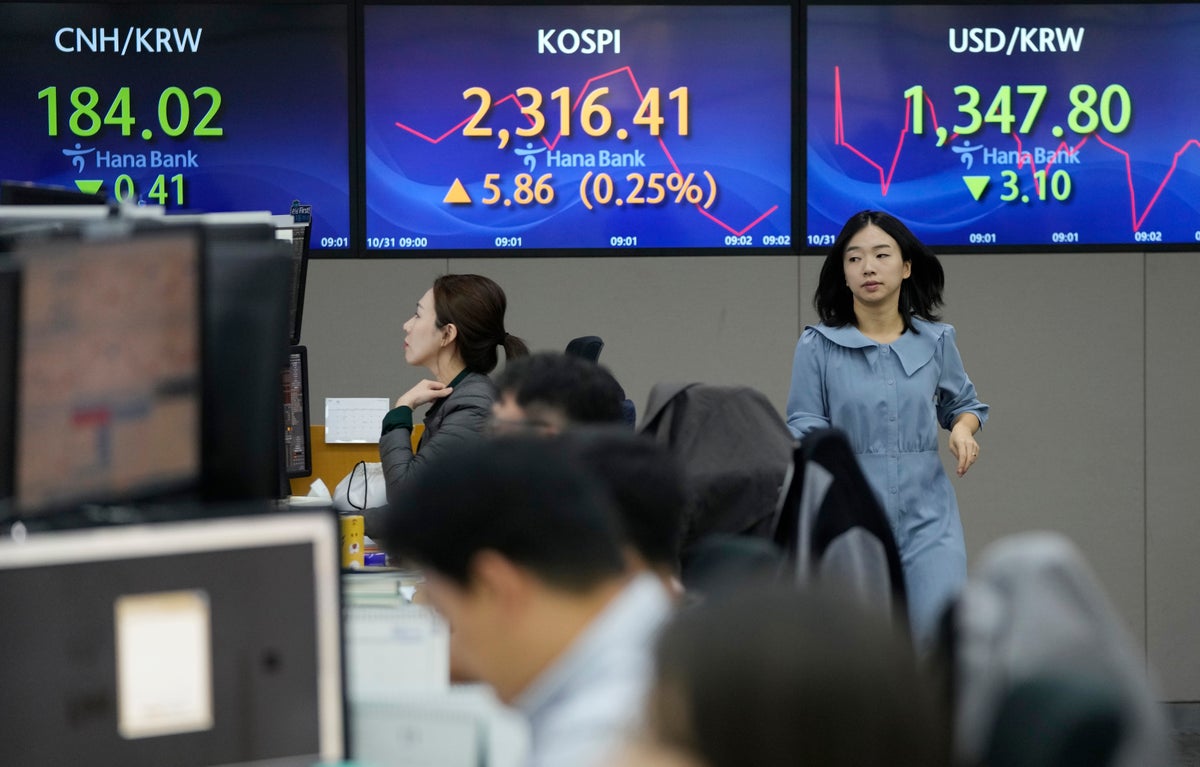
Asian shares were trading mixed Tuesday as investors looked ahead to a week that could see more swings in financial markets, including key reports on U.S. consumer confidence and the job market.
Japan's benchmark Nikkei 225 reversed course and added 0.3% in afternoon trading to 30,796.81. Australia's S&P/ASX 200 gained 0.1% to 6,780.70. South Korea's Kospi lost 1.3% to 2,280.48. Hong Kong's Hang Seng shed 1.0% to 17,059.78, while the Shanghai Composite declined 0.4% to 3,008.37.
Japan’s central bank changed its language on yields Tuesday, allowing the yields on its 10-year government bonds to increase above 1%, calling it “a reference point” instead of a more rigidly set cap.
“The Bank judges that it is appropriate to increase the flexibility in the conduct of yield curve control so that long-term interest rates will be formed smoothly in financial markets in response to future developments,” the Bank of Japan said in a statement.
At the end of its two-day policy meeting, the Bank of Japan maintained its monetary policy that takes a different track from the U.S. Federal Reserve and the world’s other major central banks, which have been tightening their monetary policies.
That has led to a dramatically weakening Japanese yen. Although a weak yen is a boon for Japan’s exporters, raising the value of its overseas earnings, an overly volatile currency is a minus for the economy overall and decreases Japan’s purchasing power.
The U.S. dollar has been trading at the upper 140-yen levels for some time, hitting 150 yen recently. In currency trading, the U.S. dollar rose to 150.16 Japanese yen from 149.04 yen. The euro cost $1.0595, down from $1.0619.
On Wall Street, the S&P 500 rose 49.45 points, or 1.2%, to close at 4,166.82 on Monday. It was the first trading after the benchmark index dropped more than 10% below its high point for the year.
The Dow Jones Industrial Average rose 511.37, or 1.6%, to 32,928.96 points. The Nasdaq composite rose 146.47, or 1.2%, to 12,789.48.
Apple will report its latest quarterly results Thursday. Because it’s the most valuable stock on Wall Street, it is also the most influential stock on the S&P 500. Already, sharp drops for Alphabet and other Big Tech members following their profit reports have shaken the market this reporting season.
Big Tech soared much more than the rest of the market early this year, which helped to lift the S&P 500 but also meant big expectations for continued growth. Those expectations perhaps grew too large.
The second big factor dragging on the stock market since its high point for the year on July 31 has been a sharp run higher in Treasury yields. When bonds are paying higher yields, investors have less appetite for pricey stocks and other investments. They also make borrowing more expensive for everyone from huge corporations to home buyers, which puts the brakes on the economy.
The yield on the 10-year Treasury rose to 4.89% from 4.84% late Friday. It jumped from less than 3.50% during the spring to more than 5% earlier this month, its highest level since 2007. A remarkably resilient economy and other factors have the 10-year Treasury yield catching up to the main interest rate controlled by the Fed, which is above 5.25% and at its highest level since 2001.
On Tuesday, the government will release data on employment costs from July through September. Workers have been fighting for higher raises, but the Fed worries that overly high pay increases could give inflation more fuel. Also, The Conference Board will release its consumer confidence index for October.
On Wednesday will come the latest monthly update on the number of job openings across the country. One way the Fed could pull off the delicate balancing act of slowing the economy without creating a recession would be if the number of job openings cools without requiring waves of layoffs.
Then on Friday will come the jobs report for October, which is typically one of the most anticipated pieces of economic data every month.
Through it all will be other updates on the economy and borrowing by the U.S. government, as well as profit reports from roughly 150 companies in the S&P 500, including CVS Health, Pfizer and Starbucks.
A barrel of U.S. crude jumped from less than $70 to more than $93 earlier this month. Oil prices have been shaky since the start of the latest Israel-Hamas war. Traders are still uncertain about whether the fighting will spill into the politics around the region and affect production from Iran or other big suppliers.
Benchmark U.S. crude added 42 cents to $82.73 a barrel. It fell 3.8% Monday to $82.31. Brent crude, the international standard, rose 36 cents to $87.81 per barrel.







